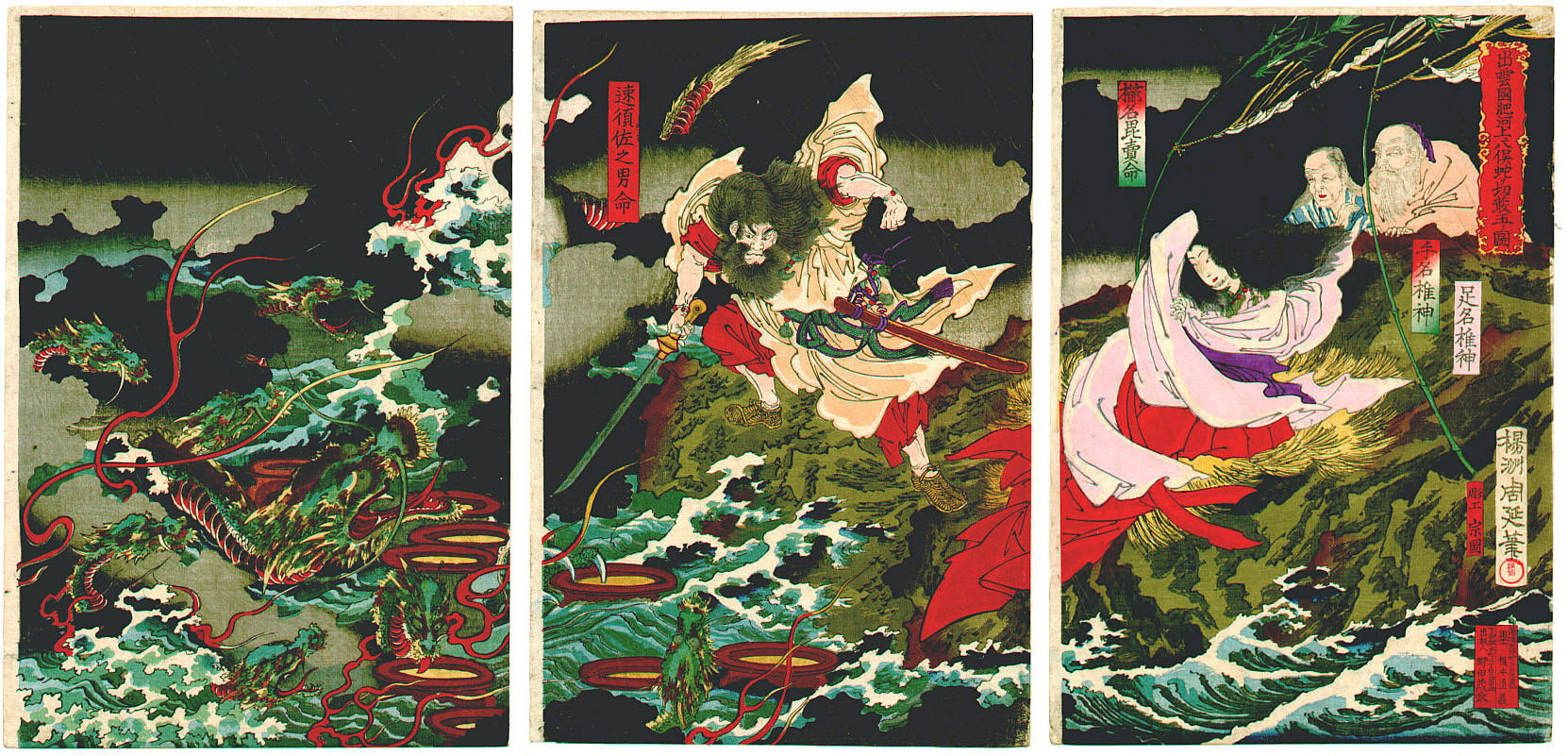|
Kusanagi
is a legendary Japanese sword and one of three Imperial Regalia of Japan. It was originally called , but its name was later changed to the more popular ("Grass-Cutting Sword"). In folklore, the sword represents the virtue of valor. Legends The history of the extends into legend. According to , the god Susanoo encountered a grieving family of ("gods of the land") headed by in Izumo Province. When Susanoo inquired of Ashinazuchi, he told him that his family was being terrorized by the fearsome Yamata no Orochi, an eight-headed serpent of Koshi, who had consumed seven of the family's eight daughters and that the creature was coming for his final daughter, . Susanoo investigated the creature, and after an abortive encounter he returned with a plan to defeat it. In return, he asked for Kushinada-hime's hand in marriage, which was agreed. Transforming her temporarily into a comb (one interpreter reads this section as "using a comb he turns into asquerades asKushinada-hime") ... [...More Info...] [...Related Items...] OR: [Wikipedia] [Google] [Baidu] |
Atsuta Shrine
is a Shinto shrine traditionally believed to have been established during the reign of Emperor Keikō (71-130) located in Atsuta-ku, Nagoya, Aichi Prefecture in Japan. The shrine is familiarly known as ''Atsuta-Sama'' (Venerable Atsuta) or simply as ''Miya'' (the Shrine). Since ancient times, it has been especially revered, ranking with the Grand Shrine of Ise.Atsuta-jingū org: History [...More Info...] [...Related Items...] OR: [Wikipedia] [Google] [Baidu] |

_of_Atsuta_Shrire.jpg)